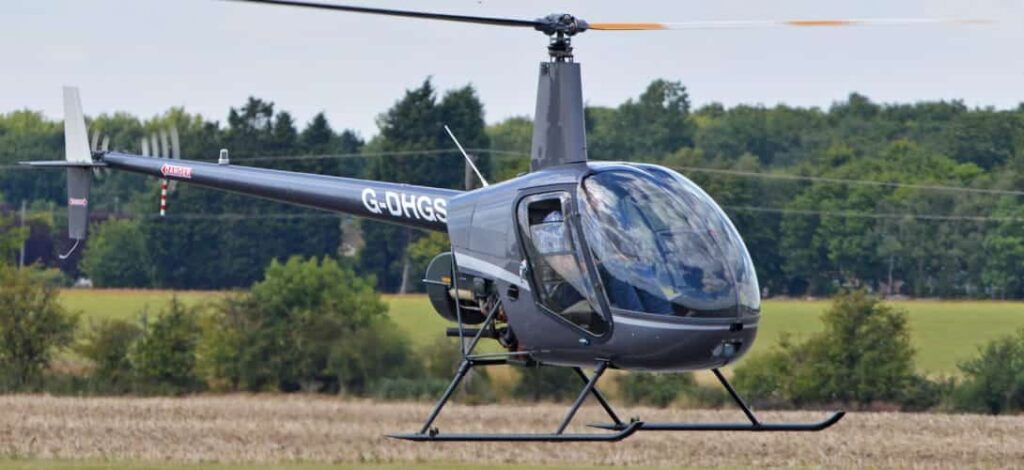Flying cars have always been a fantasy to any common man. Most of you might have wondered why flying cars are different from Helicopters. But it has again become a hot topic since Aska-A5 has recently been launched as the first functional four-seater flying car at Consumer Electronics Show (CES) 2023, an annual trade show organized by the Consumer Technology Association (CTA) at Las Vegas, USA.

COMPARISONS
There’s always been an overlap that people draw between a flying car and a helicopter. Let’s attempt to draw some comparisons between both of them:
By Definition
A flying car or roadable aircraft is a type of vehicle which can function both as a road vehicle and as an aircraft.
A helicopter is an aircraft with one or more power-driven horizontal propellers or rotors that enable it to take off and land vertically, to move in any direction, or to remain stationary in the air.
Functionalities
Flying cars can perform the dual function of flying as an aircraft as well as running on roads like any other car since the wings are foldable.
Helicopters are used only as an aircraft. Though some helicopters have foldable wings, they can’t be used for movement on roads as in the case of cars.
Movement on Wheels
In flying cars, the wheels used are that of any normal car which generate rotary motion and are responsible for moving the car from one point to another.
While in helicopters, wheels and tires are there to facilitate taxiing, landing, and towing if it’s not powered – they are alternatives to skids to ease basic ground movement.
Licence
A flying car operator will require licensure both to drive and fly, and will require appropriate vehicle registration and Type Certification.
Whereas the helicopter operator requires only the licence for aviation (FAA).
Certifications
Flying cars will require to pass the certifications for both aviation (FAA) as well as road vehicle.
While helicopters with wheels do not need to pass road vehicle certification and are also not permitted to be on public roads.
Distance Range
Flying cars are expected to be used as a medium of commuting/transport for Intra-City or Intercity within an estimated range of 100-1000 kms.
Whereas helicopters fly an average distance of 400-650 kms (on a single tank), and 2000 kms for military helicopters.
Ease of Operation
Flying cars are far easier to operate than a helicopter.
In most helicopters, the diameter of the rotor blades is huge which takes up a lot of space.
Whereas in Flying cars, wings are foldable which enables them to operate in a limited space.
In helicopters, the wheels aren’t powered. So if you need to move it on the ground, you must tow it, or the rotors must be turning, which in turn makes a huge amount of wind, enough to blow you away.
Whereas in Flying cars, the function of the wheels will remain the same as in any normal car.
Speed
Since Flying cars are in testing stage, their cruising speed varies from 100-180 km/hr.
Whereas helicopters have an average cruising speed of 250-300 km/hr.
Price
The price range of flying cars varies from, US $92000 (Jetson One) to $1 million (AirCar)
A typical private helicopter cost varies from $250,000 (Robinson R22) to $9 million (AgustaWestland AW109) excluding annual maintenance costs and fuel.
Environmental Hazards
Flying cars are expected to run on Lithium ion batteries.
As per Environmental Protection Agency (EPA), not cars, but helicopters are the biggest source of lead pollutants in US.
FAQs
Who & when was the first Flying car invented?
Waldo Waterman developed the first Flying car, Arrowbile in 1937.
Do any real Flying cars exist as of now? Is it still fiction or gonna be a reality?
It has already become a reality. In July 2021, a prototype flying car, AirCar, completed a 35 minute with an estimated range of 1000 kms (600 miles) at an altitude of 8200 ft (2500 m) cruised at a speed of 170 km/hr between two airports- Nitra and Bratislava, Slovakia.

What’s the future prediction of the acceptance of Flying cars as a way of transport?
Their adoption is expected to be a step-by-step process i.e. initially as emergency vehicles, as a mode of ridesharing service or as a consumer vehicle, depending on the laws enacted by the governments of different countries.
What’s the expected Market potential of Flying cars?
As per Morgan Stanley Research, the total projected market for autonomous aircraft is $1.5 trillion by 2040.
Which will be the first country to use the first flying car?
Slovakia, where a green signal has already been given to AirCar by the Slovak Transport Authority, according to AirCar’s developer Klein Vision.
When is it expected to start flying cars?
Many of you must be guessing, if Flying cars are the future, then “where’s my car?”
So, the good news is that first deliveries by AirCar are expected to begin in late 2023. It’ll cost anywhere between $500,000 and $1 million.
What could be the biggest challenges in enacting the laws regarding flying cars?
The biggest challenges would be in terms of Safety measures regarding the following areas:
(a) Safety during take offs and landings should be regulated by the National Airspace System (NAS) and minimum safety standards for Airspace logistics should be assigned by Federal Aviation Administration (FAA).
(b) Developing a specific autonomous system to provide a back-up/safe mode system to flying cars, so that they could be operated and controlled in case they encounter unusual situations like technical glitches.
(c) Adverse weather conditions (e.g. snowstorm, heavy rain, high wind, etc.) would require operational safety.
Are Flying cars more efficient than Helicopters?
There are some advantages as well as some disadvantages of Flying cars in comparison to Helicopters:
Advantages:
(a) You would need a smaller area to park
(b) Purchase & Maintenance cost including fuel would be much lesser
(c) Fuel sources like petrol pumps/electric charge stations are easily available for flying cars
(d) Increased accessibility to air travel
(e) Reduced travel time
(f) Environment friendly, as most of them are expected to be electric.
Limitations:
(a) As per fundamental physics, helicopters are the most efficient flying machine that can hover over obstacles, lift weights, so they are best for designing a rescue operation. Flying cars couldn’t match this potential.
(b) If the engine of a flying car cuts off, there would be no control over it anymore despite installed parachutes, so you could descend onto a building, into the middle of the street or onto someone’s house which might hurt or kill someone
What will be the commonalities between Flying cars & Helicopters?
(a) You will still need to learn flying skills i.e. how to navigate, and how to talk on the radio
(b) With the exception of autonomous flying cars, you will still need a pilot’s license
(c) You’ll still be limited by weather
(d) You’ll require special landing places
Why aren’t flying cars operational yet? Or are there? Why have they not been legalised yet?
Since they are not a conventional way of commuting yet, many of them are still under development and testing. Moreover, they will require various approvals from Aviation as well as Road authorities which take longer time. Apart from this, local laws will be enacted based on the risk factors and feasibility of their operations.
If Helicopters like flying cars, why don’t we make them commercially more accessible?
Some have already been designed for exactly this purpose, for example: Robinson R22 which is a low-cost two seat commuter helicopter. It’s got an internal combustion engine like a car. But ultimately it didn’t work out because:
(a) Price-range of a Flying cars is much higher than a normal car, though much cheaper than a helicopter (approx. US$300,000).
(b) High operating cost (approx. US$150/hr)
(c) You can’t really operate them easily in urban areas as you can’t land one at the supermarket.

Will helicopters be replaced by flying cars in the next 20 years?
Absolutely not. Helicopters have their own strengths for which they have been designed and developed like military operations, rescue operations etc. which could not be replaced by flying cars.
Will flying cars be safer than helicopters?
Most models are expected to be automated where the rider needs not touch the operation part even during take offs and landings of the flying car. A totally autonomous flight regime where flying cars can safely and routinely operate, could surely make flying cars a much better option for travel. But afterall, they are a machines and can face technical issues, so a much efficient safety/back up system would be required to make it a reliable source of transport.

